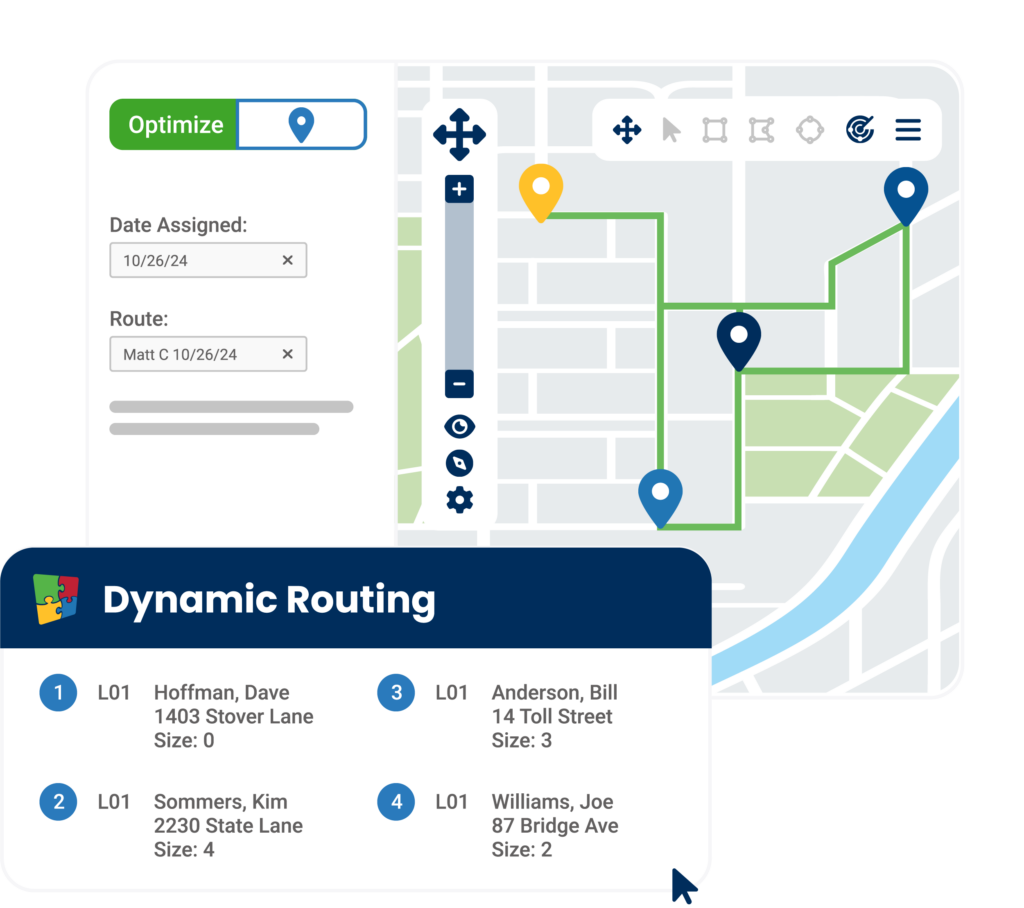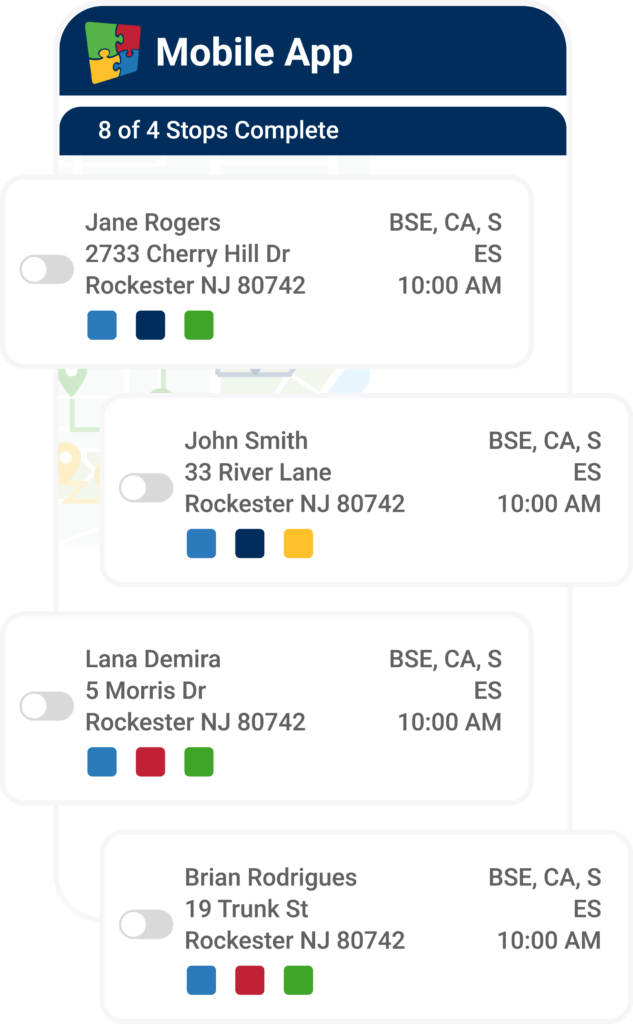Static Vs. Dynamic Routing: What’s the Difference?
When you’re running a lawn operation, every minute counts. Picture this: the sun is shining, the grass is growing, and you have a long list of clients who are eagerly awaiting that perfect trim. But getting from point A to point B isn’t just about a straight line anymore; it’s an art form, a dance between static routing and real-time dynamic routing. So, what’s the deal with these two approaches? Let’s dive in and discover which one makes more sense for your lawn care business.
What Is Static Routing?
Static routing involves pre-defined routes that remain constant, regardless of real-time variables such as traffic, weather, or delivery constraints. While this approach offers stability, it may not adapt well to dynamic changes in the transportation environment. Static routing assumes consistent, predictable traffic patterns and stable routes; routes are created based on this historical data to create a straightforward and easily manageable system. When dynamic factors such as real-time traffic updates are less of a concern, the stability provided by static routing can create a predictable and cost-effective model.
Key benefits of static routing include:
Predictability. The predictable structure of static routing allows for long-term planning and resource allocation without the constant need for adjustments.
Simplicity. With predefined routes, static systems can be simpler to implement and maintain as they require less real-time data integration.
Consistency. Static routes work well for businesses with well-established routines and reliable transportation networks.
However, these same factors can render static routes inflexible. For lawn businesses with unique needs, evolving customer bases, and weather-based constraints, static routes can pose a challenge, rendering it difficult to add last-minute stops or to make changes based on crew or customer availability.
What Is Dynamic Routing?
 Dynamic routing, on the other hand, leverages key data to optimize routes based on current conditions. This approach considers factors like traffic patterns, business constraints, appointment times, and service types, providing flexibility and responsiveness to unforeseen challenges.
Dynamic routing, on the other hand, leverages key data to optimize routes based on current conditions. This approach considers factors like traffic patterns, business constraints, appointment times, and service types, providing flexibility and responsiveness to unforeseen challenges.
Green industry businesses that need to adapt to traffic and weather conditions, customer requests, employee availability, licensing, and other constraints use dynamic routing to help streamline operations. Adjusting routes after they have been created not only helps businesses avoid delays but also makes them more responsive, contributing to cost savings through more effective resource allocation.
Key benefits of dynamic routing include:
Flexibility and Adaptability. Dynamic routing enables businesses to adapt to changing circumstances, ensuring optimal route adjustments based on constraints including type of service, technician availability, equipment needs, etc.
Enhanced Customer Service. Highly optimized routes allow businesses to provide accurate arrival estimates, improving customer satisfaction by managing expectations and reducing uncertainties.
Cost Efficiency. Dynamic routing helps reduce fuel consumption and operational costs by avoiding traffic congestion and taking advantage of the most efficient paths.
A lawn care business can benefit from dynamic routing by optimizing routes for their lawn care technicians to save time, fuel, and, ultimately, money. Dynamic routing allows the business to adapt to changes such as traffic, weather conditions, and customer demands, ensuring that technicians are deployed efficiently and effectively. By using dynamic routing, a lawn care business can improve customer satisfaction by providing more accurate arrival times and completing more jobs in a day. Not only can this lead to reduced windshield time, it will also lead to increased revenue and growth opportunities for the business. Overall, dynamic routing can help streamline operations and drive success for a lawn care business.
Dynamic Routing by RealGreen: A Game-Changing Solution for the Green Industry
 Implementing dynamic routing software involves selecting a suitable solution that integrates with live data sources and provides robust optimization algorithms. Consider factors such as scalability, ease of use, and the ability to customize parameters for your specific needs.
Implementing dynamic routing software involves selecting a suitable solution that integrates with live data sources and provides robust optimization algorithms. Consider factors such as scalability, ease of use, and the ability to customize parameters for your specific needs.
RealGreen’s Dynamic Routing tool is a game-changer for green industry routing. It automates your back-office processes and builds efficient routes that honor your business rules. Here’s what you can expect:
- Configure constraints and stop priority with the click of a button
- Simplified route planning with our proprietary algorithm
- Routes that honor your business rules and configured constraints minimize errors, reduce risk, and enhance reliability
- Flexibility to make adjustments and fine-tune routes after they’ve been created
Dynamic Routing will revolutionize your routes. Schedule a demo today to find out how you can maximize your operational efficiency and boost your bottom line with the most efficient routes possible.



